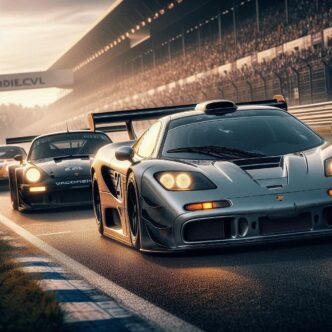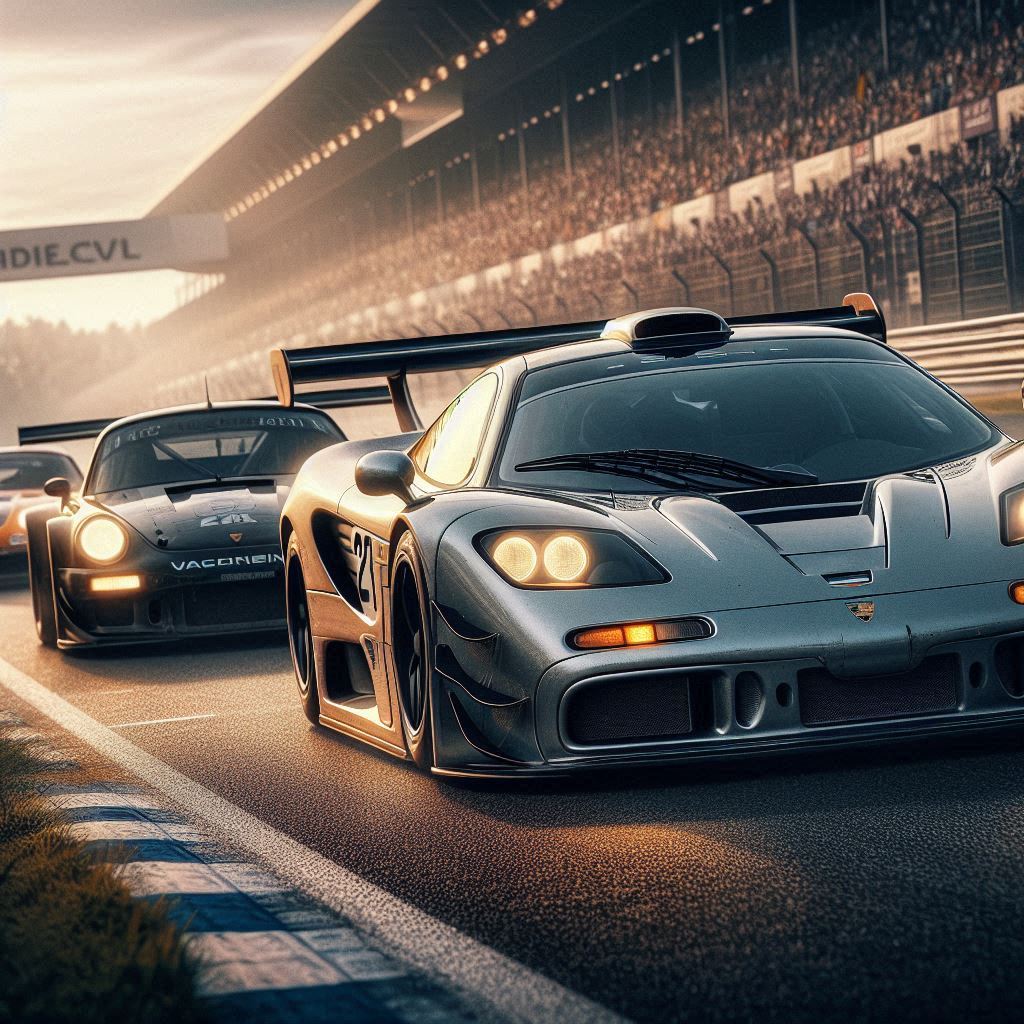The 1990s marked a transformative era for the 24 Hours of Le Mans, blending technological innovation, fierce competition, and evolving regulations into a defining decade for endurance racing. This period not only showcased iconic cars and legendary drivers but also set the stage for many modern practices and regulations that continue to shape the race today.
The Evolution of Endurance Racing
Held annually at the Circuit de la Sarthe in France, the 24 Hours of Le Mans has been a cornerstone of motorsport since its inception in 1923. The 1990s saw a resurgence in the event’s popularity, driven by the emergence of new racing classes and the participation of leading automotive manufacturers.
The Rise of GT1
A significant development during this decade was the introduction of the GT1 category, designed to attract manufacturers and increase competition. This class allowed for a mix of production-based cars and pure racing machines, resulting in iconic entries like:
- McLaren F1 GTR: Debuting in 1995, the F1 GTR was celebrated for its lightweight carbon fiber chassis and BMW-sourced 6.1-liter V12 engine, producing around 600 horsepower. Its remarkable performance led to a historic 1-2-3 finish at Le Mans that year.
- Porsche 911 GT1: Introduced in 1996, the 911 GT1 featured a mid-mounted 3.2-liter flat-six engine, advanced aerodynamics, and lightweight construction. This car marked Porsche’s return to Le Mans and significantly contributed to its racing legacy.
- Mercedes-Benz CLK GTR: This car combined cutting-edge technology and performance, becoming another standout in the GT1 class and showcasing Mercedes’ engineering prowess.
Prototype Cars Take Center Stage
Alongside GT1, the decade saw the prominence of prototype racing, particularly the LMP (Le Mans Prototype) category. Manufacturers began to push engineering limits, resulting in formidable entries like:
- Toyota TS010: A prototype featuring a 3.5-liter V10 engine, the TS010 competed vigorously in the early ’90s, marking Toyota’s commitment to endurance racing.
- Nissan R90CK: Powered by a turbocharged 3.5-liter V8, the R90CK showcased Nissan’s engineering capabilities and contributed to the decade’s intense competition.
- Audi R8 (1999): The debut of the Audi R8 at the end of the decade set the stage for a new era in endurance racing. Featuring a 3.6-liter V8 engine and quattro all-wheel-drive system, the R8 would dominate the early 2000s.
Legendary Drivers
The 1990s also introduced several legendary drivers who would leave a lasting mark on the event:
- Derek Bell: A veteran of endurance racing, Bell achieved significant success driving for various teams, including victories with the Porsche 962 and Jaguar XJR-14.
- Tom Kristensen: Making his debut in 1997, the Danish driver would eventually become known as “Mr. Le Mans,” renowned for his consistency and skill. His partnership with Audi in the following decade would define modern endurance racing.
- Martin Brundle: A prominent figure, Brundle drove for teams like Jaguar and contributed to the intense rivalries and memorable races of the decade.
- Stéphane Sarrazin: Emerging in the ’90s, Sarrazin showcased his talent in various prototypes, later becoming known for his versatility in endurance racing.
Regulatory Changes and Their Impact
The 1990s saw significant regulatory changes that reshaped the landscape of Le Mans racing:
1. Introduction of the GT1 Class
The GT1 class was established in 1994 to allow production-based cars that underwent modifications. This encouraged participation from a wider range of manufacturers and revitalized interest in endurance racing.
2. Balance of Performance (BoP)
While the formal implementation of BoP occurred later, early attempts to balance performance among diverse vehicle classes began in the ’90s. This became essential for creating competitive racing environments and remains a critical component of modern Le Mans.
3. Safety Regulations
In response to increasing speeds and tragic accidents, safety regulations were enhanced throughout the decade. Improved crash structures, mandatory driver safety gear, and better track safety measures were implemented, laying the groundwork for modern safety standards in motorsport.
4. Environmental Considerations
The discussions around environmental impact began in the 1990s, setting the stage for future innovations in hybrid and alternative fuel technologies that would dominate later years.
Memorable Races and Rivalries
The 1990s produced unforgettable races and rivalries that defined the decade:
- 1991: Jaguar XJR-14: The race showcased the Jaguar XJR-14’s superior performance, reinforcing its status in endurance racing.
- 1995: McLaren’s Historic Triumph: The McLaren F1 GTR achieved a remarkable 1-2-3 finish, a highlight that remains celebrated in Le Mans history.
- 1996: Porsche’s Return: The 911 GT1 showcased Porsche’s engineering prowess amid fierce competition in the GT1 class.
- 1999: The Dawn of the Audi R8: The debut of the R8 marked the beginning of Audi’s dominance in endurance racing, although the car did not win its inaugural race.
Lasting Impact on Modern Le Mans Racing
The developments of the 1990s had profound implications for modern endurance racing:
- Technological Advances: Innovations introduced in this decade, such as lightweight materials and advanced aerodynamics, continue to influence car design today.
- Class Structure: The diverse classes established during the 1990s have become central to the event, allowing for varied competition and engaging a wider audience.
- Manufacturer Engagement: The decade’s surge in manufacturer participation set trends for modern marketing and engineering strategies in motorsport.
- Focus on Safety and Sustainability: The regulatory changes initiated in the ’90s paved the way for rigorous safety standards and environmental considerations that are crucial in modern racing.
Conclusion
The 1990s were a dynamic and defining decade for the 24 Hours of Le Mans, characterized by iconic cars, legendary drivers, and significant regulatory changes. The McLaren F1 GTR, Porsche 911 GT1, and Audi R8 set benchmarks for performance and engineering, while drivers like Tom Kristensen and Derek Bell became legends of the sport. As we reflect on this influential era, its impact resonates in the thrilling races and technological innovations that continue to define Le Mans in the 21st century.















